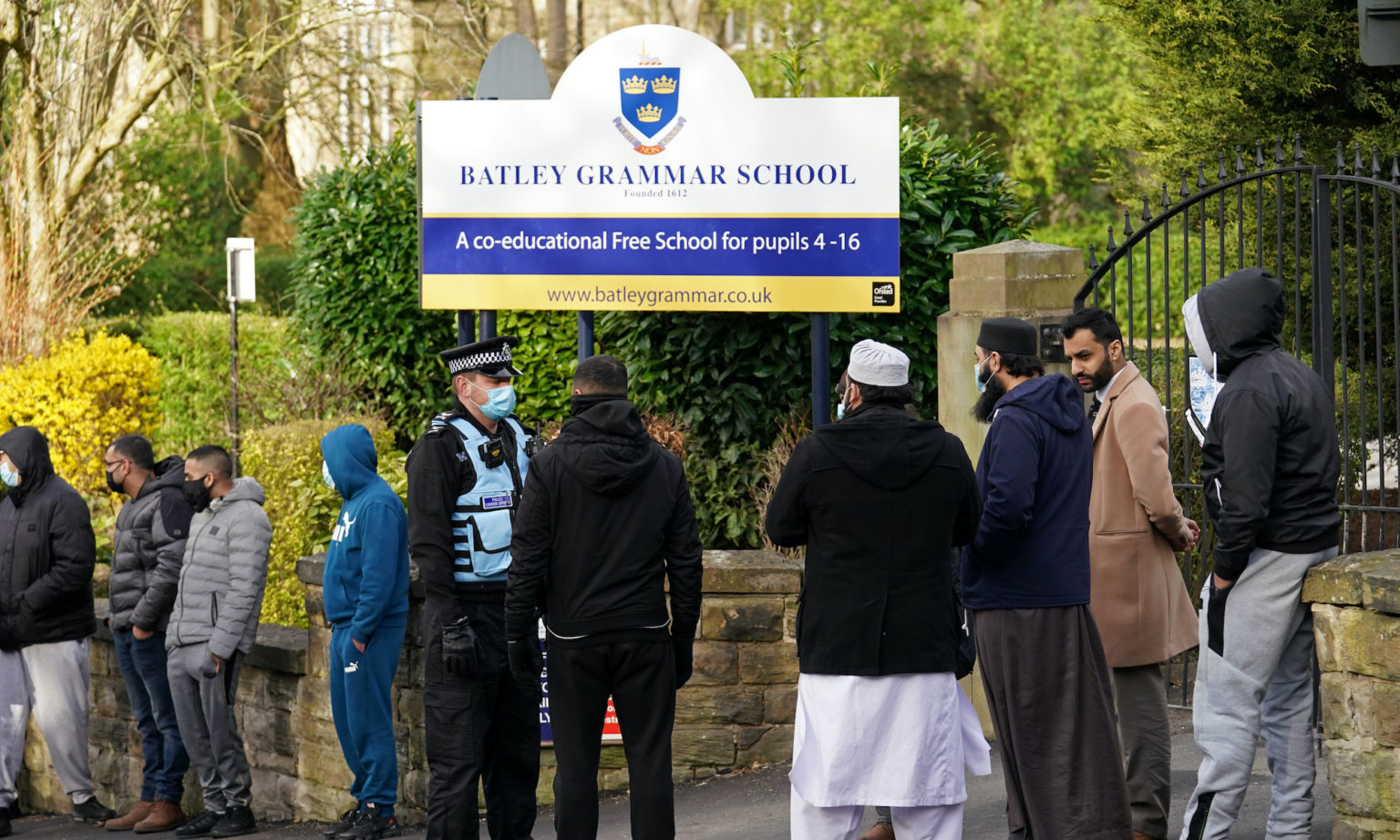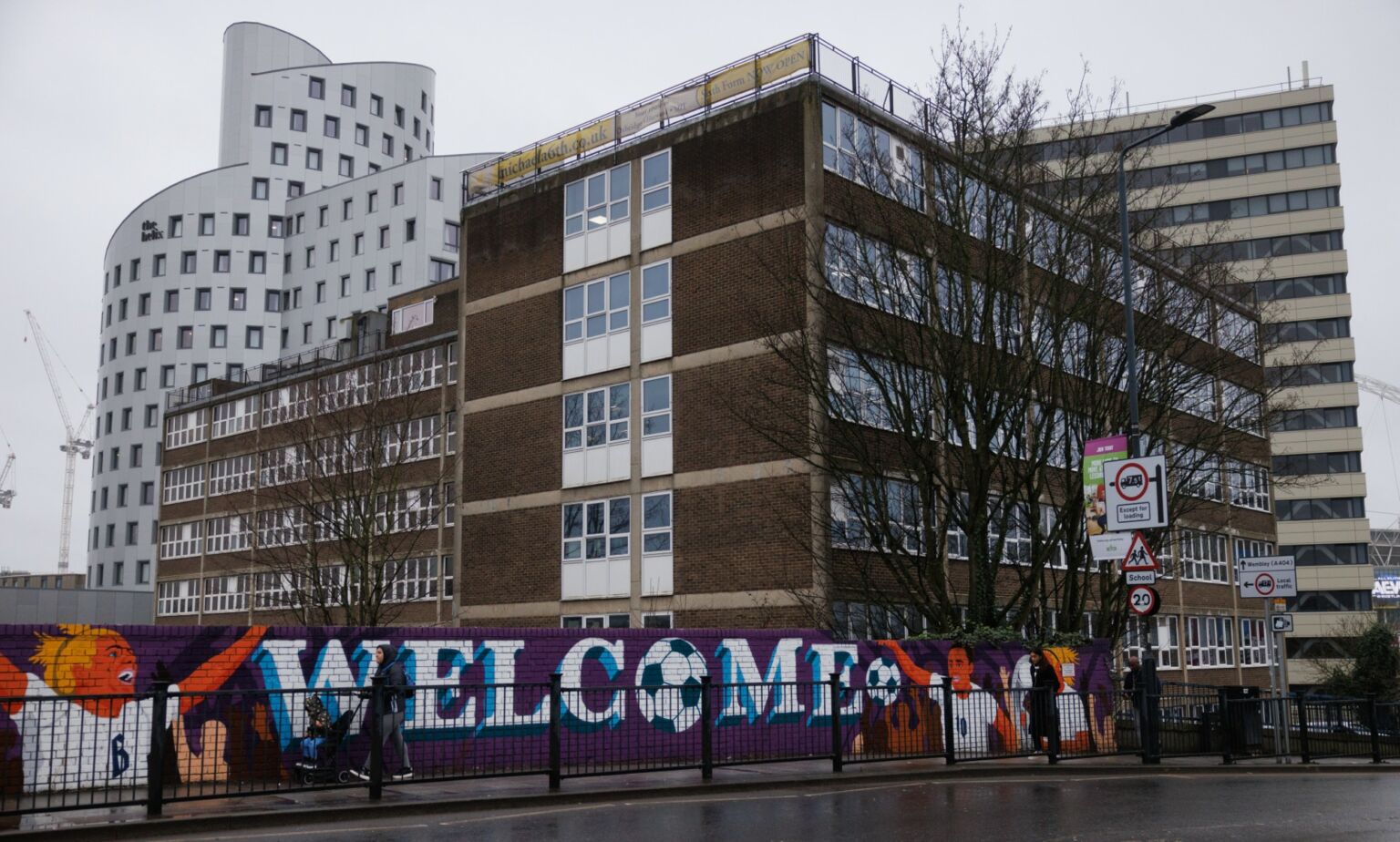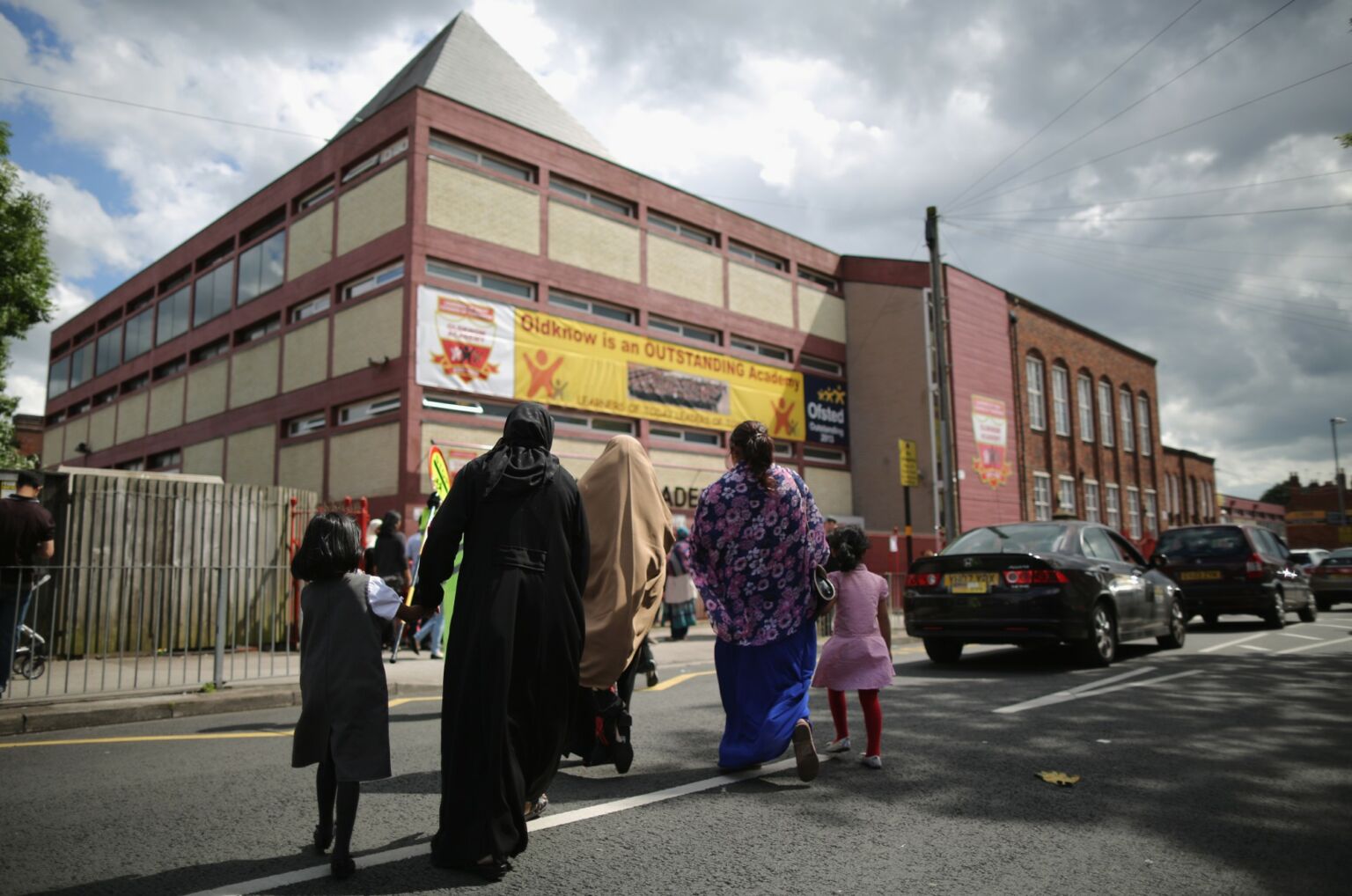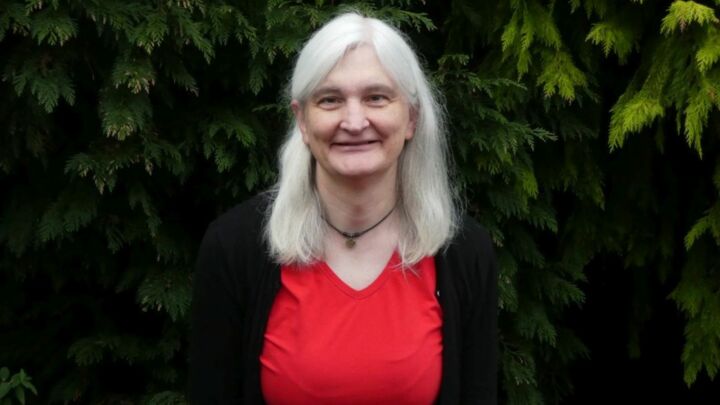
Long-read
How Muslim identity politics colonised education
From Batley Grammar to Michaela, schools are being besieged by religious hardliners.
British schools are being turned into political battlegrounds. A militant Muslim identity politics is mounting an ever-stronger challenge to their educational authority. Over the past few weeks alone, the Michaela Community School in north-west London has appeared at the High Court, having been sued for discrimination by a Muslim pupil over its decision to ban prayer rituals. And a few miles away in east London, Barclay Primary School has been under attack from Islamists and a few parents after it told children not to wear clothing or badges displaying some form of ‘political allegiance’ in school – a move interpreted as a clampdown on pro-Palestine symbols.
In both cases, activists’ response to the school’s decisions has been marked by menace. Following Michaela’s decision to ban prayer rituals last spring, bomb threats were made to teachers, the school was vandalised and a brick was thrown through a classroom window. And in response to Barclay Primary’s change to its uniform code, arson and bomb threats were sent both to the school and individual staff. Masked men climbed the school’s fence at night to hang Palestinian flags around its perimeter.

There is a tendency to frame cases like this as part of an age-old conflict between religion and modernity. Between the demands of faith and the demands of public life in secular societies. But it’s a misleading characterisation. The aggressive imposition of Muslim cultural practices on to education has very little to do with Islam and everything to do with decades of multicultural policymaking. That is what we’re seeing right now in the cases of Michaela and Barclay. Not quiet displays of faith, but loud, all-too-visible assertions of Muslim identitarianism.
The rise of Muslim identity politics
Not so long ago, the very idea of waging any sort of public political campaign around being a Muslim would have been nonsensical. In the 1970s, those living in, say, the large Pakistani and Bangladeshi communities of Birmingham or Bradford, still waged political struggles of course, especially against racism and discrimination. But their struggles, often coalescing with broader working-class politics, focussed mainly on issues of material and political equality. On employment. On housing. They wanted to be treated as equal citizens, not as different identity groups. If activists thought of themselves in terms of any ‘identity’, they did so in terms of ethnicity, as Pakistanis or Bangladeshis, not as members of some transnational, monolithic Muslim community, or Ummah.
This was because religion then was largely what it ought to be in a secular society – an Islamist contingent apart. It was a private affair, a matter of conscience and ritual. Just as earlier immigrant minorities, such as the Irish or the Jews, cleaved to their national and religious traditions in largely personal and private ways, so did these more recent immigrants from Asia. They took part in public acts of worship, but their faith rarely took on a political form.
Even during the Ray Honeyford affair of the mid-1980s, race rather than faith was the focus. Honeyford had been appointed headteacher of Drummond Middle School in Bradford in 1980. This was the same year that the local education authority stopped ‘bussing’ pupils to different schools around the city in an effort to mix and integrate minority communities. As a result, the intake for Drummond Middle, which was in an almost entirely Pakistani area, became monocultural practically overnight.
The local education authority said that the new multiculturalist approach would prioritise a respect for ‘cultural diversity’ over ‘assimilation’. In particular, schools were urged to ‘build on and develop the strengths of cultural and linguistic diversity’ and to ‘respond sensitively to the special needs of minority groups’.
Honeyford publicly took issue with this approach, first in the pages of the Times Educational Supplement and then, most explosively, in a 1984 piece for the small, conservative publication, the Salisbury Review. He complained that ‘British-born Asian children’ were no longer being taught English as a first language. They would ‘begin their mastery of English by being taught in Urdu’, he said, which was causing linguistic confusion and preventing their integration into British society. In the Salisbury Review piece, he argued that multiculturalism encouraged those ‘Asians whose aim is to preserve as intact as possible the values and attitudes of the Indian subcontinent’. Finally, he warned that using education in this way would ‘produce Asian ghettos’.
Thanks, in part, to the intemperate tone in which he dismissed Pakistan as ‘obstinately backward’, Honeyford’s intervention prompted agitation and protests from the local, largely Pakistani community. By 1985, about half the pupils had stopped attending lessons and angry parents and other activists had started organising large-scale protests outside the school. Honeyford’s position proved untenable and, though he successfully appealed against a suspension, he was forced to retire in 1986 and never worked in a school again.
Many cite the Honeyford affair as a precursor to the conflicts over education we’re witnessing today, with integrationists on Honeyford’s side and those preaching cultural difference on the other. And it’s true that there are similarities. Honeyford’s fear that ‘respecting’ diversity would lead to division and de-facto segregation in certain towns and cities is one that has echoed down the years, from Ted Cantle’s 2001 review into social cohesion following the riots in Oldham, Burnley and Bradford to Trevor Phillips’ 2005 claim that we’re sleepwalking into racial and religious segregation. The angry response to Honeyford’s insistence on ‘assimilation’ from parents, who saw it as an assault on their ethnicity, also echoes the protests we have seen outside schools recently.
But it’s the differences between then and now that are most telling. In his pieces, Honeyford didn’t really mention Islam or Muslims at all. And perhaps more importantly, nor did the majority of the protesters. They didn’t organise as Muslims. And they weren’t demanding that Drummond Middle introduce Islamic dress codes. In fact, some of Honeyford’s opponents insist even to this day that they wanted the schools to better integrate kids and would have supported the dispersal of pupils throughout the city. They wanted Honeyford out mainly because of his dismissive attitude towards Pakistan and the way that he expressed himself.
There’s no doubt that the Honeyford affair was a hugely important moment in the growing conflict over education and identity politics. But it was a transitional moment. At that stage, in the early to mid-1980s, a militant Muslim identity politics of the type we’re seeing today was striking by its absence.
The British state’s embrace of multiculturalism during the 1980s, and especially the 1990s, is key to understanding why Muslim identity politics has emerged. The ideology itself had been germinating on the left for a while in the form of an increasingly cultural politics, divorced from class and economic struggle and focussed on racial, gender and personal identity. But it was yet to gain wider traction among the establishment. A sign that this was changing came in the aftermath of the 1981 Brixton riots. Lord Scarman’s subsequent report advocated a ‘multicultural’ approach, which ‘recognised’ the different needs of ethnic communities. From that point on, multiculturalism slowly but surely became a mechanism through which the state sought to manage society in the absence of any unifying vision of Britain. By the 1990s, multiculturalism had become the official ideology of Britain’s establishment, filling the gap where the older sources of legitimacy, from Empire and Second World War triumphalism to anti-Communism, had once been.
The impact of this elite embrace of multiculturalism has been profound. It has encouraged people to think of themselves, indeed to identify themselves, as members of particular cultural groups first and foremost. And it has, in turn, fuelled these groups’ competitive demands for ‘recognition’ from the state. It lends legitimacy to their claims that their cultural identity has been disrespected, that they have been disadvantaged and victimised because of their cultural difference.
State-backed multiculturalism effectively created the climate for Muslimness to emerge as a group identity in Britain. It encouraged the transformation of the private, religious affairs of often diverse minority communities into a very public, monolithic political identity.
It’s an identity that has often been adopted and cultivated by second-, third- and fourth-generation immigrants, usually in opposition to their parents. That is why, over the past few decades, it has been a younger cohort ostentatiously parading and performing their religiosity, from the uptick in veil-wearing among young Muslim women to the vehement identification with transnational ‘Muslim’ causes, such as Palestine.
The fatwa against Salman Rushdie in 1989 provided the spark for the explosion of Muslim identity politics into British public life, complete with claims of victimhood and offence. But it was multiculturalism that provided the inflammatory conditions for it. As British sociologist Tariq Modood noted in 2003, ‘Muslim assertiveness’ is primarily derived ‘not from Islam or Islamism but from contemporary Western ideas about equality and multiculturalism’.
From the 1990s onwards, Muslim identity politics has developed apace, hand in hand with the growth of state-backed multiculturalism. In 1997, the British government established the single umbrella body, the Muslim Council of Britain (MCB), which gave an official voice to the demands of Muslim identity politics. That same year, the Runnymede Trust first popularised the term ‘Islamophobia’, shaping and intensifying a sense of victimhood on the part of the newly minted ‘Muslim community’. From then on, this peculiar form of religious identitarianism has exerted significant influence on every domain of public life, and on education in particular.
The identitarians at the gates
Muslim identitarians’ demand for recognition – their demand that their group’s difference be legally and publicly affirmed – has often been made at the school gates. And this has largely been facilitated by the state itself.
Indeed, in 1998, New Labour established the first state-funded Islamic faith schools in Britain. Just over 15 years later, there were 10 state-backed Islamic primary schools and 11 Islamic secondary schools, and well over a hundred independent Islamic schools. Today, the number stands at over 200. Among those is Ray Honeyford’s old school, Drummond Middle School, which became a Muslim faith school in 2000.
The multicultural policies of successive governments have clearly fuelled the rapid growth in schools offering an Islamic-hued education. But they have also further established Muslims as a distinct, separate group within British society. An Ofsted chief warned in 2005 that ‘our recognition of diversity’ was challenging our ‘coherence as a nation’. He was predictably accused of ‘Islamophobia’ by the chairman of the Association of Muslim Schools, another part of the multicultural lobbying sector.
But it is in non-faith state schools that multiculturalism has generated the most conflict. Perhaps the most notorious example is the so-called Trojan Horse affair. In 2013, a letter, now widely accepted to be a hoax, was sent to Birmingham City Council alleging an Islamist plot to take over several Birmingham non-faith state schools. After the letter was leaked to the press in March 2014, prompting several government reviews and Ofsted inspections, a clearer, less dramatic but no less troubling picture emerged. In three secondary schools and two primary schools, three of which were run by the Parkview Educational Trust, there was a concerted effort to recruit Muslim staff and governors, institute prayer rooms and even introduce calls to prayer. At one school, creationism was taught as science, and during one sex-education lesson, pupils were reportedly told that a woman cannot refuse her husband sex. It got worse. In one WhatsApp group – tellingly only for male Muslim employees of the three schools run by the Parkview Trust – gay people were described as ‘animals’ and teachers were urged to be ready to combat their ‘Satanic ways’.

Ofsted was prompted to re-inspect the schools in 2014 following the scandal. Its conclusions were damning. One of the schools was accused of not preparing students for life in a modern, ‘diverse’ society. Another was not ‘doing enough to mitigate against cultural isolation’. And another was said to be promoting a ‘particular and narrow faith-based ideology in what is a maintained and non-faith academy’.
These schools weren’t Trojan horses for Islamic extremism as the original letter suggested, or as some of the more excitable reporting at the time implied. They were vehicles for the very Muslim identity politics that had been encouraged by the state. Indeed, it is telling that the figure at the centre of the scandal, Tahir Alam, the one-time director of the Park View Educational Trust, was not only a veteran of the Islamic lobbying sector, working in several positions for the Muslim Council of Britain and the Association of Muslim Schools. He was also patronised by the state itself. In 2007, Alam was invited to Downing Street to meet Tony Blair, ‘in recognition of his work on diversity’. Which is one way of describing the 2007 MCB ‘guidance’ for state schools that Alam co-authored, in which the MCB called for Muslim students to be allowed to wear Islamic dress in school.
Although the MCB guidance was dismissed by the government of the day, identitarian agitators have tended to get their way. Certainly in recent years. Schools have been only too keen to recognise and kowtow to Muslim protesters. They have backtracked, moved teachers on and issued grovelling apologies.
Take St Stephen’s primary school in east London. In 2018, it banned girls under the age of eight from wearing headscarves on the grounds it would help them integrate. Islamic activists objected and mounted an orchestrated campaign of intimidation, sending the school upwards of 500 emails a day, some of which were threatening. By the start of 2019, St Stephens had given in to the pressure, apologised and reversed the ban.
Worse was to come in 2021. At Batley Grammar School, near Bradford in Yorkshire, a teacher had decided to show students a satirical cartoon of the Prophet Muhammad from Charlie Hebdo as part of a religious-studies lesson on freedom of speech. When activists got wind of the lesson, they descended on the school en masse to denounce the teacher’s actions. Parts of the multicultural lobbying infrastructure also intervened, with Muslim Engagement and Development (MEND) claiming that its ‘Islamophobia Response Unit’ was supporting ‘upset’ parents in Batley.
And what was the school’s response to this naked attempt to dictate what can be taught? It caved in almost immediately. The head teacher ‘unequivocally’ apologised to the protesters. The school, to its eternal shame, suspended the teacher involved, casting him as the wrongdoer. In the face of such vitriol from activists, the teacher was placed under police protection and forced into hiding. On Saturday, The Times revealed that the teacher remains in hiding three years on.
In March last year, we witnessed arguably the most disturbing example yet of the reality of multicultural politicking and the vicious identitarianism it has unleashed. An autistic boy, egged on by three of his friends, brought a Koran into Kettlethorpe High School in Wakefield. He accidentally dropped it on the floor, leading to it being ‘lightly scuffed’. When news reached local Muslim leaders and Islamist agitators that school boys had supposedly desecrated the Koran, they rounded on the school. Some even decided to menace the autistic boy with death and arson threats.
And this is where it gets truly disturbing. Rather than protect those in its care, the school threw the boys to the identitarian wolves. The pupils were suspended, the police were called in and recorded a ‘hate incident’ against the autistic boy, and his mother appeared at a mosque alongside a local imam to apologise on behalf of her son. As Tom Slater put it at the time, ‘this mother was effectively begging for her son’s safety, while the school and police were apparently more concerned about protecting religious bigots’ hurt feelings’.
What the incidents at St Stephen’s, Batley Grammar and Kettlethorpe High show is that multiculturalism is corroding the secular basis of our public institutions. It has fuelled the creation of an aggressive Muslim identity politics, which constantly asserts its victimhood, its offendedness and its demands for recognition. It has given rise to an infrastructure of complaint and grievance, dedicated to seeing Islamophobia everywhere. Above all, it has helped to sacralise Muslimness, turning the hitherto private matter of faith into a crusading public identity.
Increasingly, our public institutions are proving morally and politically powerless to resist this militancy. After all, the old secular arguments for faith as a private matter have been undermined by the state’s own decision to turn faith into a public matter – into an identity that must be recognised.
One must hope that the schools currently in the firing line of the religious identitarians are able to hold firm. That Barclay defies the intimidation and sticks to its ban on political symbols in school. And that Michaela wins its High Court case, and persists with its own strictures on prayer rituals. Not because of the merits or otherwise of the bans and rules themselves. But because it would represent, at long last, a form of resistance to the state-backed multiculturalism fuelling division at the school gates.
Tim Black is a spiked columnist.
Pictures: Getty.
To enquire about republishing spiked’s content, a right to reply or to request a correction, please contact the managing editor, Viv Regan.








Comments
Want to join the conversation?
Only spiked supporters and patrons, who donate regularly to us, can comment on our articles.